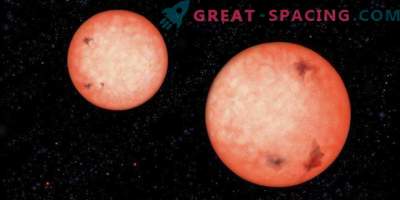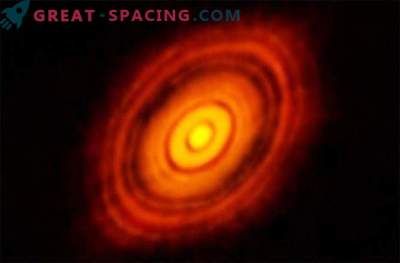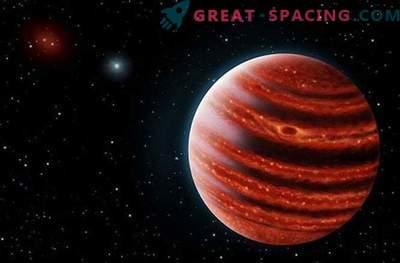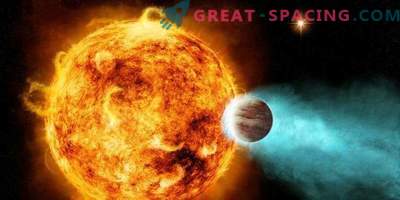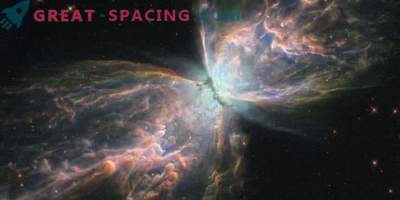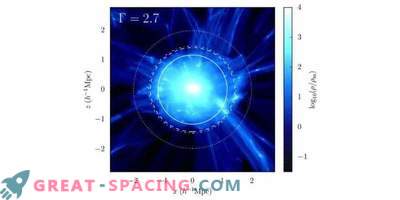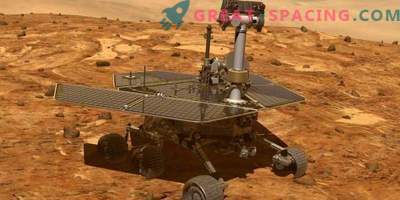
With the help of a powerful telescope, the researchers managed to fix the place where the planets can originate right now. Let's take a look at the new research.
Birth of the Planet
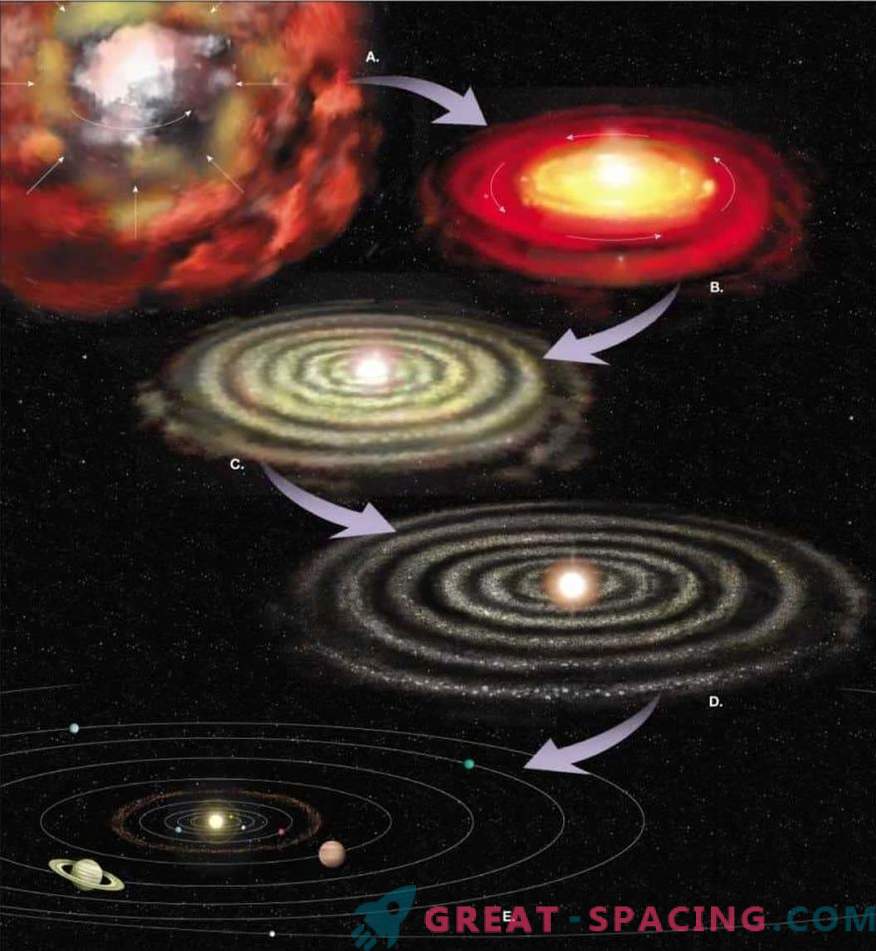
Graphic representation of the origin of planets from the solar nebula
We estimate the remaining stars and planetary systems based on observations of their own. There are several theories, but one of the most popular says that everything started 4.6 billion years ago with an interstellar cloud of gas and dust (the solar nebula hypothesis).
It was a large-scale cloud (several light years), capable of generating several stars, so the researchers are still continuing their search for the sun sister. For some reason (perhaps because of the explosion of a nearby supernova), gravitational compression worked, and the parameters of the cloud began to decline. As a result, a rotating protoplanetary disk and a central protostar (the future of the Sun) appeared.
As the star developed, the material around it constantly crashed. Dust and debris merged into larger objects, creating planets. This process lasted about 10-20 million years. Researchers still face problems and questions. The fact is that the approximate planets to the Sun belong to the terrestrial group (rocky), but the gas giants appeared later and did not have heavy elements. So they absorbed the gases and were not constrained in the parameters. Then why does the class of hot Jupiter show up closer to a star in foreign systems than in ours? And the model implies the presence of other types of planets, which we have not observed. Therefore, researchers with great zeal study other planetary systems to answer all these questions.
DM Tau Star
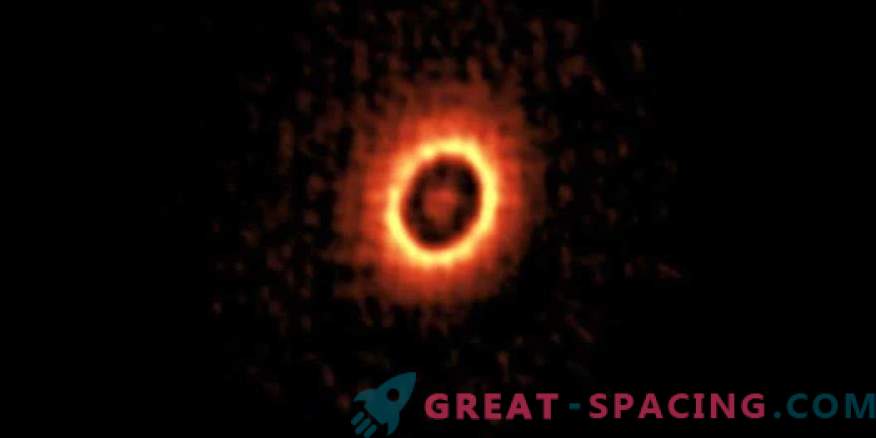
DM Tau picture taken by ALMA
Before you is a young star representative (3-5 million years) living in the constellation of Taurus with a distance of 470 light years. By massiveness 2 times inferior to the sun. When reviewing the telescopic array ALMA, researchers noticed that two large ring formations are concentrated around this star, located at distances Sun-Neptune and Sun-asteroid belt.
The first ring covers in the parameters about 4 a. e. from the star, and the second - 20 a. e. If we take the hypothesis of the solar nebula, then there is every chance to hope that a new planetary system with a star of the solar type is emerging before our eyes.
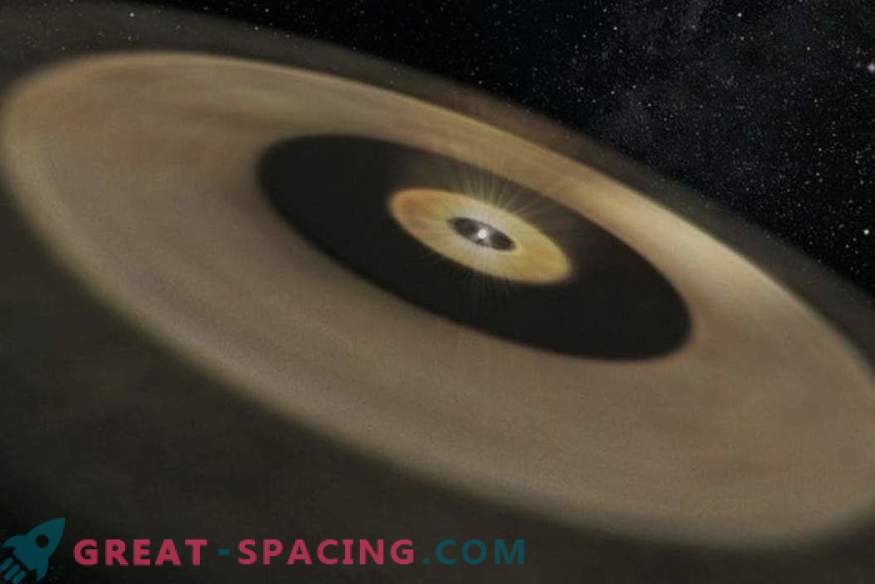
DM Tau star system through the eyes of an artist
Gas giants are expected to appear in the outer ring, but researchers are more interested in the domestic sector. Closer to the star may appear a planet of the earth type. If it is in the habitable zone, the chances of the presence of life will increase. But otherwise, researchers will be able to track the processes of planetary formation and create models that answer questions about our solar system.
Postscript
Of course, one human life is not enough to trace even the appearance of the first planets. But it is already gratifying that our technologies are capable of recording the moments of the birth of worlds in foreign protoplanetary disks at the initial stage. Perhaps one day we will be able to say exactly how our planet originated and the life on it.




